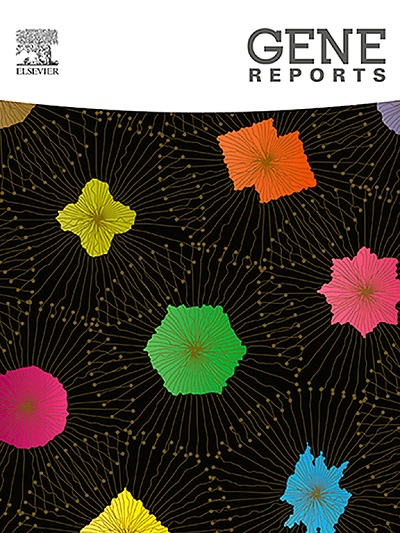Comparing liver RNA-seq analysis of human, rhesus monkey, mouse and rat
IF 1
Q4 GENETICS & HEREDITY
引用次数: 0
Abstract
Background
Animal models are commonly utilized by the pharmaceutical industry to evaluate new drugs; however, the results of these studies are not always applicable to humans due to differences between the genetic backgrounds.
Methods
Since liver plays a prominent role in drug metabolism, we evaluated the expression profiles of human, mouse, rat, and rhesus monkey liver tissues. The differentially expressed genes were identified in different genders, strains, and species.
Results
The primates had fewer differences compared to the rodents, suggesting rhesus monkey could be a preferred model organism. Although the human HGFR (MET), a putative AAV3 receptor, together with its ligand HGF, showed no significant expression differences to the mammal models, the ligand-receptor (HGF/MET) ratio difference between the human (HGF/MET = 0.56) and the mice (HGF/MET = 0.12) might result in the transduction failure of murine hepatocytes using the AAV3 vectors. Our results also showed ACE2 expression was not detected in the human liver, while low expression levels were observed in other species, suggesting that the liver might not be the main target of SARS-CoV2.
Conclusion
In summary, even though all model organisms have limitations, non-human primates or humanized animals are indispensable during drug development before proceeding to clinical trials.
比较人、恒河猴、小鼠和大鼠的肝脏 RNA-seq 分析
背景制药业通常利用动物模型来评估新药;然而,由于遗传背景的差异,这些研究的结果并不总是适用于人类。方法由于肝脏在药物代谢中起着重要作用,我们评估了人、小鼠、大鼠和恒河猴肝脏组织的表达谱。结果灵长类动物与啮齿类动物相比差异较小,这表明恒河猴可能是首选的模式生物。虽然人的 HGFR (MET)(一种推定的 AAV3 受体)及其配体 HGF 的表达与哺乳动物模型无显著差异,但人(HGF/MET = 0.56)与小鼠(HGF/MET = 0.12)之间配体-受体(HGF/MET)比值的差异可能导致使用 AAV3 载体转导小鼠肝细胞失败。我们的结果还显示,在人类肝脏中未检测到 ACE2 的表达,而在其他物种中也观察到较低的表达水平,这表明肝脏可能不是 SARS-CoV2 的主要靶标。
本文章由计算机程序翻译,如有差异,请以英文原文为准。
求助全文
约1分钟内获得全文
求助全文
来源期刊

Gene Reports
Biochemistry, Genetics and Molecular Biology-Genetics
CiteScore
3.30
自引率
7.70%
发文量
246
审稿时长
49 days
期刊介绍:
Gene Reports publishes papers that focus on the regulation, expression, function and evolution of genes in all biological contexts, including all prokaryotic and eukaryotic organisms, as well as viruses. Gene Reports strives to be a very diverse journal and topics in all fields will be considered for publication. Although not limited to the following, some general topics include: DNA Organization, Replication & Evolution -Focus on genomic DNA (chromosomal organization, comparative genomics, DNA replication, DNA repair, mobile DNA, mitochondrial DNA, chloroplast DNA). Expression & Function - Focus on functional RNAs (microRNAs, tRNAs, rRNAs, mRNA splicing, alternative polyadenylation) Regulation - Focus on processes that mediate gene-read out (epigenetics, chromatin, histone code, transcription, translation, protein degradation). Cell Signaling - Focus on mechanisms that control information flow into the nucleus to control gene expression (kinase and phosphatase pathways controlled by extra-cellular ligands, Wnt, Notch, TGFbeta/BMPs, FGFs, IGFs etc.) Profiling of gene expression and genetic variation - Focus on high throughput approaches (e.g., DeepSeq, ChIP-Seq, Affymetrix microarrays, proteomics) that define gene regulatory circuitry, molecular pathways and protein/protein networks. Genetics - Focus on development in model organisms (e.g., mouse, frog, fruit fly, worm), human genetic variation, population genetics, as well as agricultural and veterinary genetics. Molecular Pathology & Regenerative Medicine - Focus on the deregulation of molecular processes in human diseases and mechanisms supporting regeneration of tissues through pluripotent or multipotent stem cells.
 求助内容:
求助内容: 应助结果提醒方式:
应助结果提醒方式:


